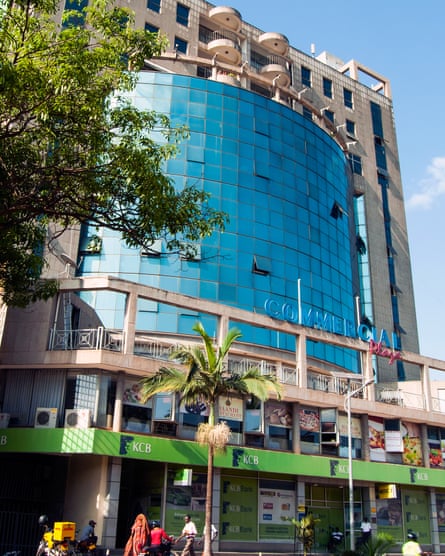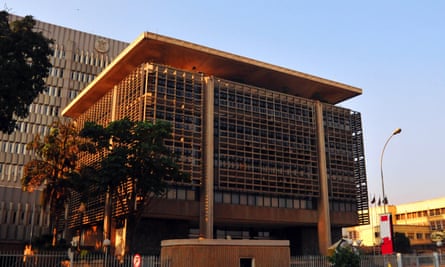Sitting outside the office of her architecture firm in the industrial area of Kampala, Uganda, Doreen Adengo remembers the last major building collapse in the city.
A four-storey building opposite Makerere University collapsed in 2016, injuring dozens and killing four people.
“Pictures of it showed that the structure columns were bigger at the top and smaller at the bottom,” says Adengo. “They found that once the architect submitted drawings for approval, they were kicked off the project.”
Architecture is all the more important in fast-changing environments like Uganda. The country is currently urbanising at a rate of more than 5.3% per year, according to a recent survey by the Commonwealth Association of Architects (CAA). Architects play a critical role in the design of cities, especially nascent ones. “Lack of proper planning often results in problems such as urban sprawl, car dependency and growing inequality,” says Peter Oborn, vice president of the CAA. “When properly trained, [architects and planners] understand the importance of creating mixed-use walkable neighbourhoods together with the value of public open space, culture and heritage.”
In which case, the situation in Uganda is acute: there are just 178 registered architects in the country of over 43 million people, which is 18,700 short of the CAA’s optimal number. The association warned this “critical shortage” could leave Ugandan cities vulnerable as they grow rapidly.

Some would say they already are. Three years before the Makere University disaster, seven people were injured in a similar incident in downtown Kampala; in July 2012 a building under construction along the city’s busy Lugogo Bypass collapsed, killing two workers. The year before that, seven people were critically injured after a building that was under construction collapsed in the city suburb of Ntinda, and in May this year another four-storey building collapsed, injuring two. The most severe incident came in 2008, when 10 people died after a school building – again, still under construction – gave way.
Kampala’s city authority has made valiant attempts at the kind of urban design Oborn describes, but with limited success. Many blame political corruption and nepotism. “There are initiatives that have started, but they always hit a snag wherever it affects politicians or big developers,” says Emmanuel Mugisha, an architect at Studio FH, a firm focusing on environmentally conscious projects in east Africa. “The rules are always adjusted to suit whatever they are doing.”
Mugisha says buildings designed in Uganda today tend to prioritise a certain aesthetic over practicality or sustainability, being modelled on the blue glass towers of Dubai rather than planned with Uganda’s equatorial climate in mind. Mugisha and his boss, Studio FH’s German founder Felix Holland, talk animatedly about how well built Uganda’s “tropical modernist” buildings from the 60s and 70s were compared with today’s efforts.
“In the postcolonial era I think there was a lot of optimism,” says Mugisha, describing well-shaded and naturally ventilated buildings in the city centre such as the Bank of Uganda and the central post office. “But if you turn to the current market, a lot of architecture schools are focused on globalisation rather than thinking about our climate.”
Mugisha is a graduate of Uganda Martyrs University, where the architect and academic Mark Olweny challenges his students to look at architecture as “more than buildings”.
“Architects are now collaborators, helping communities achieve their goals – not coming in as gods and being all-seeing experts,” Olweny says.
He agrees that Uganda needs more architects, suggesting it might encourage experimentation in the profession. But non-registered professionals designing the city is a concern. “There aren’t enough schools and there’s a very closed, elitist registration process,” he says “We probably have two or three times the number of architects registered.”
This speaks to a wider issue of elitism in the industry and its role in Uganda’s increasingly unequal society. Olweny traces this back to the days when Uganda was a British protectorate and architects could only be found in the capital. “Architecture is still regarded as dealing with the small percentage of people who can ‘afford it’, who are only based in Kampala. You get a very skewed reality, which means architects are not really dealing with the crisis – they are just adding more fuel to the fire.”

What they could be doing, says Olweny, is “reclaiming” and “decolonising” architecture by putting more resources into secondary cities such as Arua and Tororo, where so much of the population lives.
The capital was designed to be unequal under British rule. Kampala, the so-called “city of seven hills”, was racially divided, into white, Indian and British zones. “The infrastructure hasn’t really changed since then,” says Adengo – to this day, wealthy people live in large housing compounds at the top of hills, formerly “white areas”, while the poor build on crowded, often swampy informal settlements at the foot of them.
For Adengo, whose main interest is affordable housing, more important than the number of architects in Uganda is a shift in perceptions about their role. As her story about the collapsed building shows, architects need to be contracted for the entirety of a project, not just to imagine it. This way they could play an integral role in solving urban problems such as inequality and buildings that are vulnerable to their surrounding environment.

Architects designing the homes of the rich on the hilltops have an impact on the living conditions of the poorest. “If you design a parking lot [on a hill], you should make it porous rather than concrete, or [give] your roof systems to store the water,” Adengo says. “It’s harder for the people at the bottom of the wetlands, because they really have nowhere to go.”
The architecture professionals who spoke to Guardian Cities said various factors would need to change before more registered architects could make an impact in Uganda.
A good starting point would be a detailed, well designed and properly implemented masterplan from the city authority, suggest architects at Studio FH. “At the moment it’s up for interpretation,” says Mugisha. “You cannot explain why some things are the way they are in Kampala, because there is no valid basis for decision making. You just have to argue case by case.”
But first, attitudes need to shift across the board: from the belief that Kampala should aspire to be like Dubai to the idea that the well connected and rich are above the law. As long as it is the architect’s job to give the powerful what they want, would more of them make any difference?
Follow Guardian Cities on Twitter, Facebook and Instagram to join the discussion, and explore our archive here

Comments (…)
Sign in or create your Guardian account to join the discussion